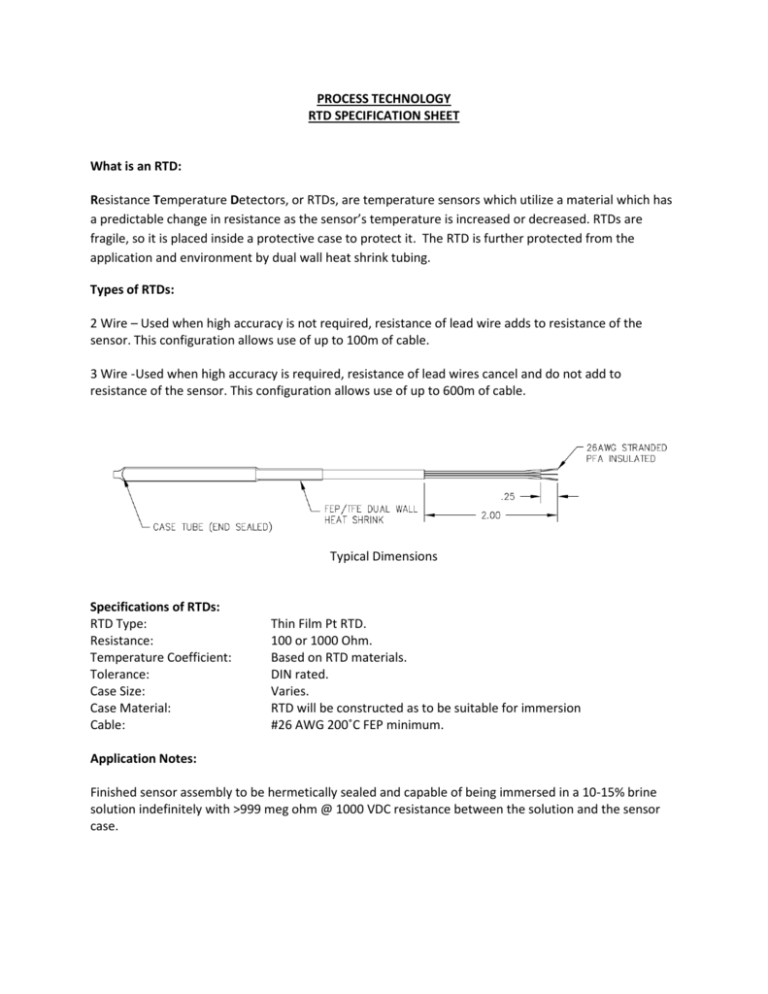RTD Specification Sheet: Resistance Temperature Detectors
advertisement

PROCESS TECHNOLOGY RTD SPECIFICATION SHEET What is an RTD: Resistance Temperature Detectors, or RTDs, are temperature sensors which utilize a material which has a predictable change in resistance as the sensor’s temperature is increased or decreased. RTDs are fragile, so it is placed inside a protective case to protect it. The RTD is further protected from the application and environment by dual wall heat shrink tubing. Types of RTDs: 2 Wire – Used when high accuracy is not required, resistance of lead wire adds to resistance of the sensor. This configuration allows use of up to 100m of cable. 3 Wire -Used when high accuracy is required, resistance of lead wires cancel and do not add to resistance of the sensor. This configuration allows use of up to 600m of cable. Typical Dimensions Specifications of RTDs: RTD Type: Resistance: Temperature Coefficient: Tolerance: Case Size: Case Material: Cable: Thin Film Pt RTD. 100 or 1000 Ohm. Based on RTD materials. DIN rated. Varies. RTD will be constructed as to be suitable for immersion #26 AWG 200˚C FEP minimum. Application Notes: Finished sensor assembly to be hermetically sealed and capable of being immersed in a 10-15% brine solution indefinitely with >999 meg ohm @ 1000 VDC resistance between the solution and the sensor case.











